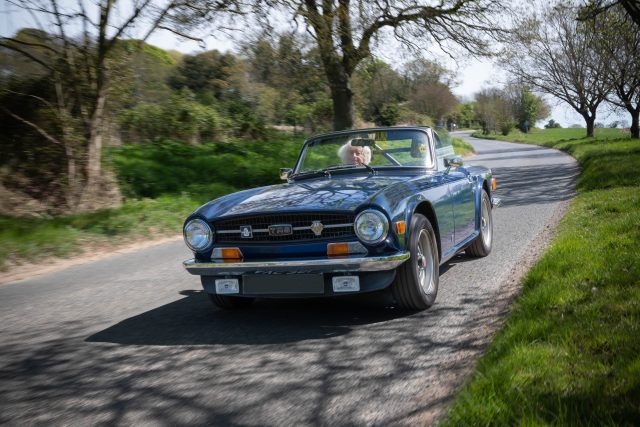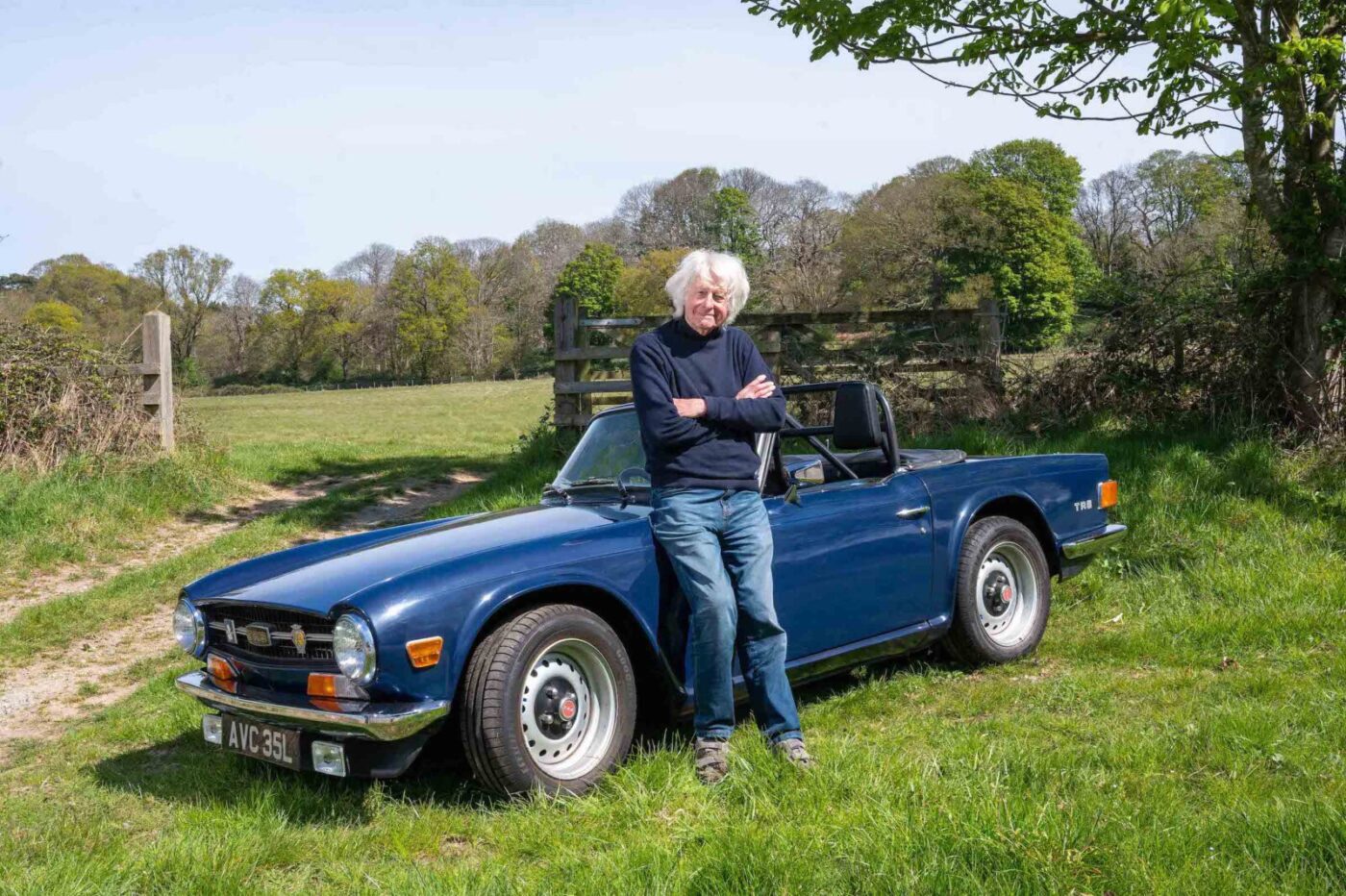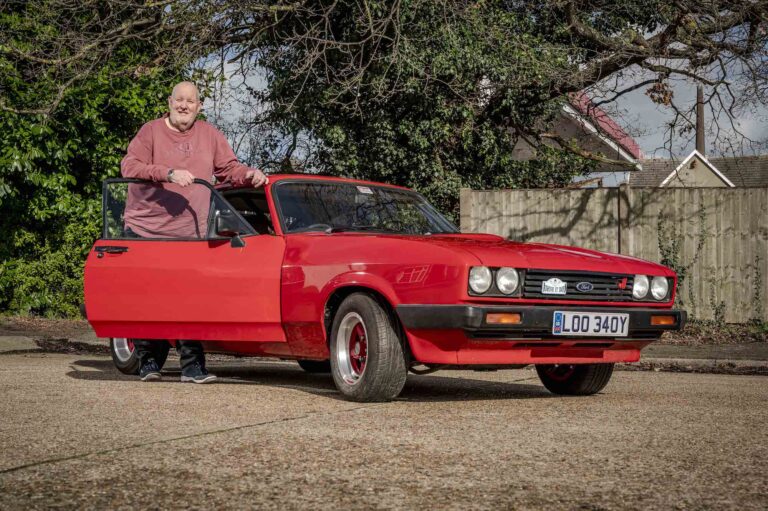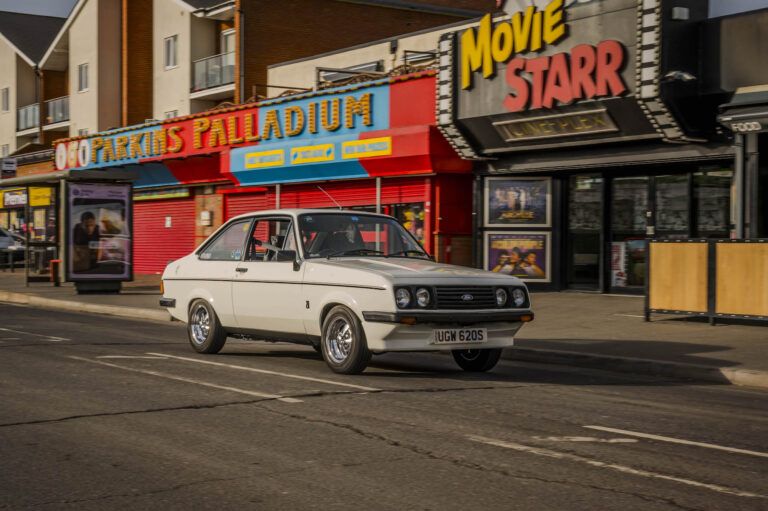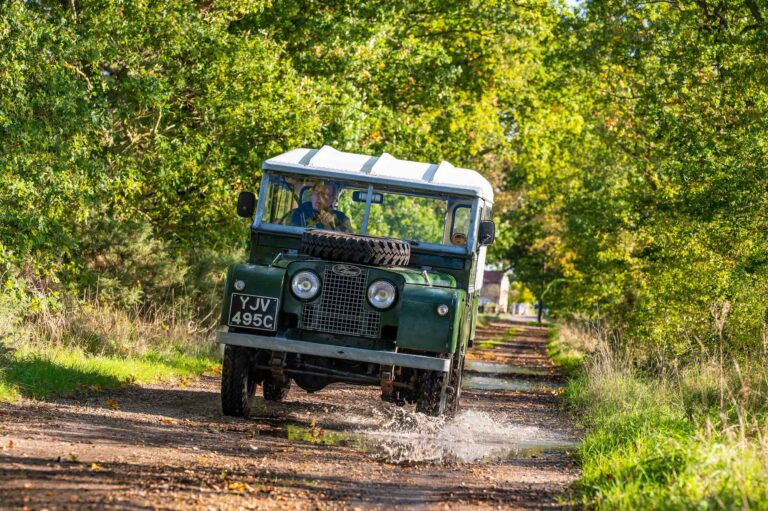In the 1980s, Reg Childerhouse had a stressful job in a printworks and would puff his way through 20 cigarettes a day.
Restoring his 1972 Triumph TR6 was not only a welcome distraction from the frustrations of implementing temperamental computerised type-setting systems, but it also directly led to his decision to quit smoking.
He was in the garage one evening in 1985, contemplating whether he could justify the cost of splashing out on paint spraying equipment – a compressor, spray gun, hoses and all the rest.
“I was lighting up my 18th fag of the day at that precise moment, just to help the thought process, and I thought ‘well, can I really justify the cost of that?’” he says.
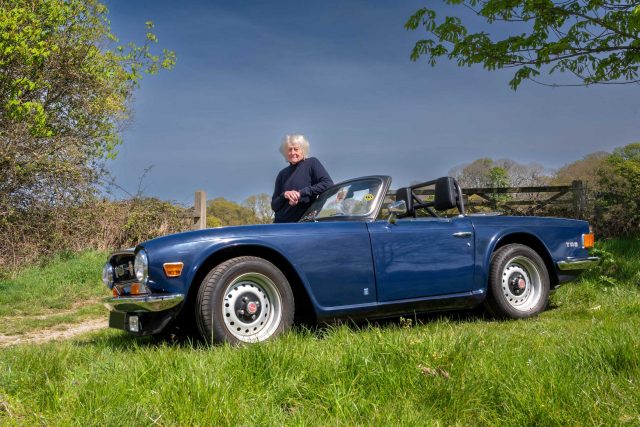
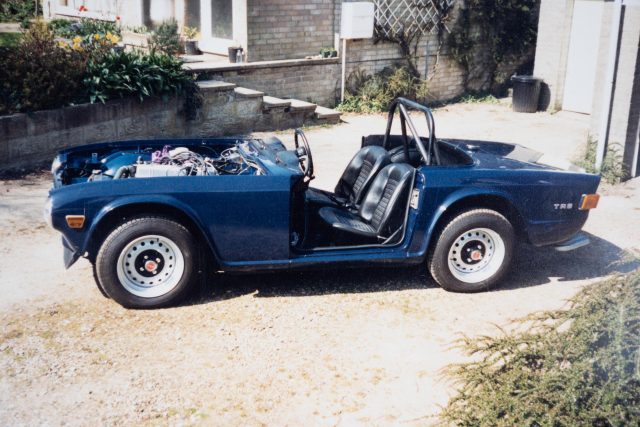
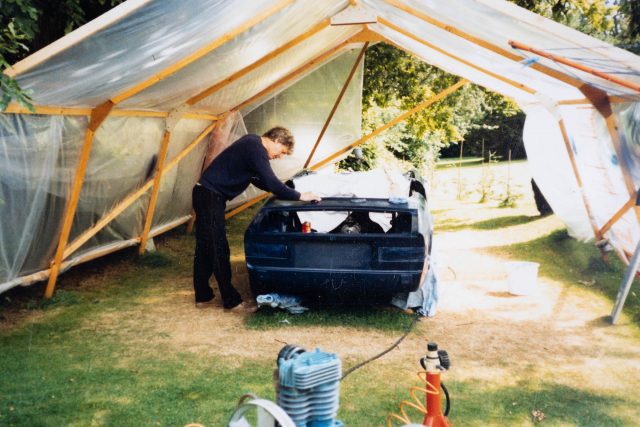
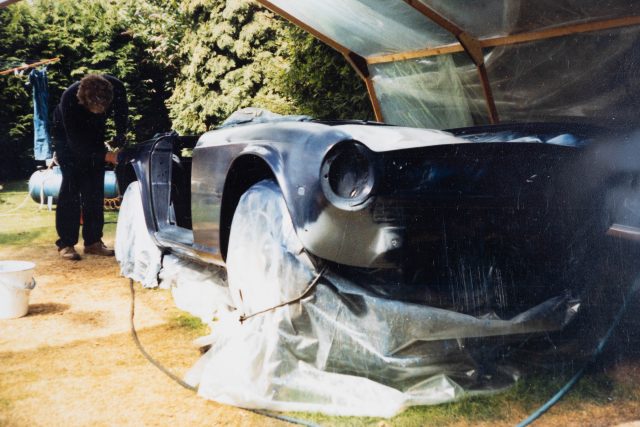
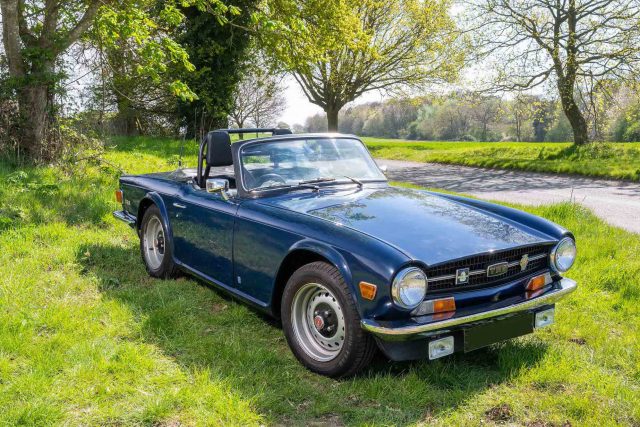
Kicking the habit
“No, I bloody well can’t, so I threw the fag away and the rest of the packet – big deal, there were only two left. I went out and, as an instant reward for giving up smoking – how’s that for optimism? – bought myself the gear I needed.
“I haven’t smoked since, and when you think of the amount of money I’ve saved it’s far more than the cost of the car, let alone the spraying equipment.”
Now 89, Reg says “Jesus H Christ” when told that a packet of 20 cigarettes would cost him somewhere between £10 and £12 today – a saving of more than £100,000 over the years at today’s prices.
“I owe the car a lot,” he adds. “The therapeutic value it gave me, and the physical value it gave me through helping me give up smoking. I probably wouldn’t be here now if I’d kept puffing away. That’s a debt, in a sense.”
He repays it by keeping the Triumph, which he painted in its original Sapphire blue cellulose in a makeshift spray booth in the garden, looking near enough flawless more than three decades later.
READ MORE ABOUT SOME OF OUR GREATEST CLASSIC CARS WITH

A series of articles on our Cult Classics site.
Work of art
The car isn’t driven much these days – it covered about 10 miles in 2021 – but Reg regards it as a work of art as much as anything.
“People say ‘I couldn’t just leave it in the garage, I’ve got to drive it’, but if you’ve got a work of art hung on a wall you want to look at it,” he says. “I want that in the garage so I can look at it.”
He does, however, fire the 2.5-litre, six cylinder engine into life for our photoshoot in rural Norfolk, the Lucas fuel-injected unit still sprightly in the modern traffic.
Fortunately for us, it’s a sunny spring day, because “if it looks like rain then it doesn’t go out, it stays in the garage,” says Reg.
“The TR has never been out in the rain since I’ve had it, and it’s also never been hosed, just cleaned with a soft duster.”
We’re sitting on a raised decking area surrounding Reg’s bungalow, an impressive timber structure he built himself, looking out over green fields.
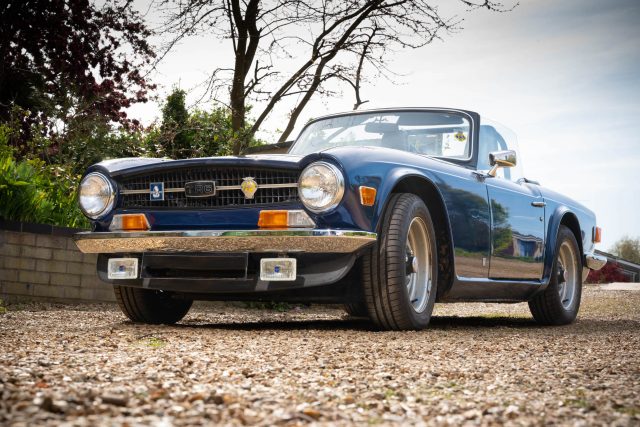
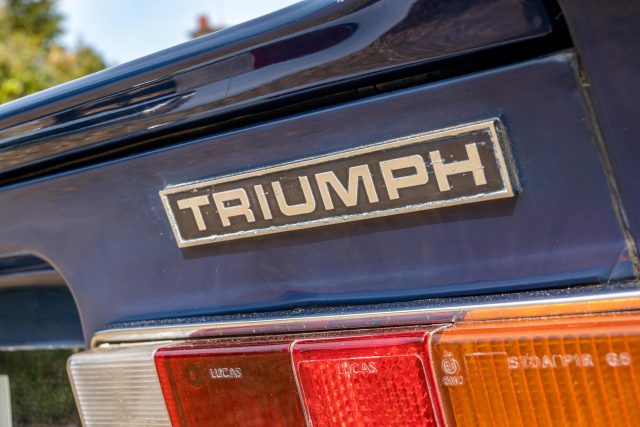
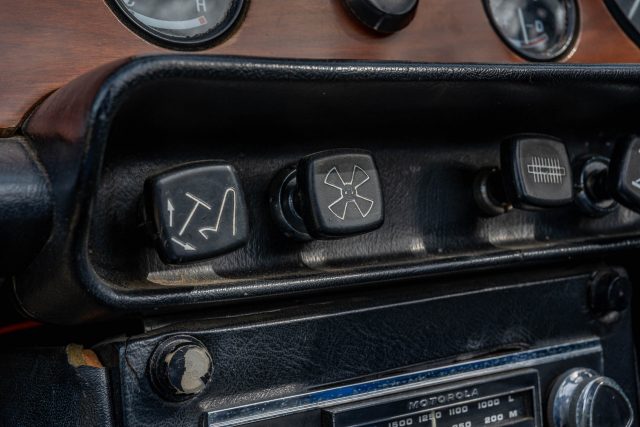
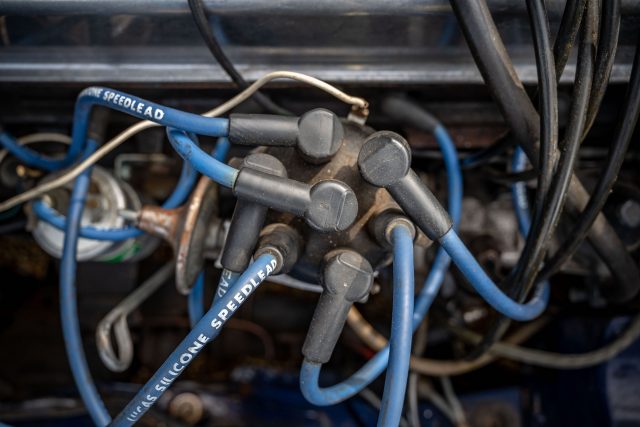
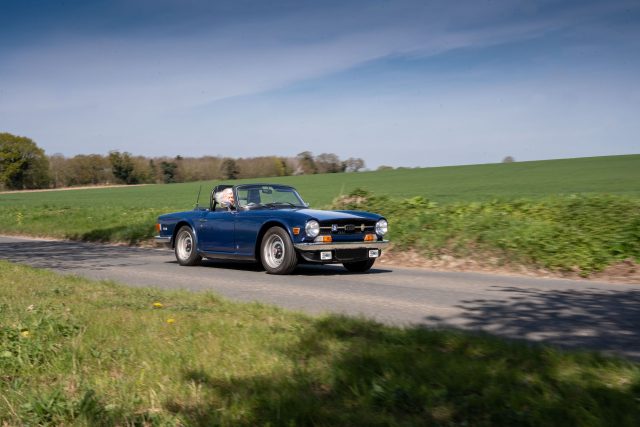
War child
It’s a very different view to that which greeted him during the war in Great Yarmouth, where he was born in 1933.
“My father was called up to fight, and it was me, my mother, brother and grandmother living in a house on the riverside,” he remembers.
“Just across the river was a motor torpedo boat base, and I used to sit up in my mother’s bedroom overlooking the river and would see these MTBs going out at night and coming back in the morning shot to pieces. All the ambulances would be lined up taking the wounded and the dead off the boats. It wasn’t a very nice sight, I can tell you.
“After a few weeks, we were evacuated from Yarmouth into the country about 12 miles away, where my mother had relatives.”
After the war, Reg began an apprenticeship in the printing industry, deferring his mandatory two years of national service until he had completed his qualifications at the age of 21.
“I was called up and, like most other people at that time, I didn’t want to go in,” he says. “I felt the same for the first two weeks, but for the last two weeks I didn’t want to come out because I had a bloody wonderful time. It was an experience I wouldn’t have missed for the world.”
Reg served his time in the RAF, where he learned to ride a motorcycle while posted at RAF Valley on the Isle of Anglesey off northwest Wales.
“One of the last assignments I had was manning a weather station there,” he says. “In the winter it’s a bleak place I can tell you, and there were three of us on eight hour shifts, 24 hours a day.
81.5% of customers could get a cheaper quote over the phone
Protect your car with tailor-made classic car insurance, including agreed value cover and discounts for limited mileage and owners club discounts

Boring job
“It was the most boring job you could ever imagine, so after a while we agreed that the station could just as easily be manned with two 12-hour shifts, which left one guy spare to do as he liked.
“One of the guys had a little Excelsior 150cc motorcycle and I learned how to ride this thing. I’d never ridden a motorbike in my life before.
“It was a mile between our accommodation and where we worked, so you either had to walk or scrounge a lift, which was quite rare, or borrow this motorbike.
“After a while I thought if I could get about a mile on this bike, then I can get from Valley to Great Yarmouth on it. A bit ambitious, you might say.
“I looked on the flight planning map and I thought ‘yeah, about 200 miles or so, I can do that in about six to eight hours easily’. Could I hell! I did get there, but it was 416 miles and it took me 16 hours. I was bloody frozen stiff by the end of the journey and I still had to get back!
“I reckon I must have been the only person who’s ever gone over the Snowdonian Ridge in a snowstorm at midnight on a motorbike.”
Back in civilian life, Reg returned to the printing industry, and bought his first car at the age of 26, an 18-month-old Austin A40 Farina.
The Austin was later sold for £300 to help fund the purchase of Reg’s first house, with a few “wrecks” serving as transport, including a “pretty rough” old Austin A70, a Beetle, a late ‘40s Hillman convertible, a Morris Minor and a Fiat 500.
“Better a third class ride than a first class walk,” he laughs, often hankering after something a “bit special”.
“I remember seeing a Jaguar XK150 fixed head advertised in Yarmouth in the mid ‘60s. I had a drive in it and it was a nice car, about three years old, but he wanted about £360 for it and it was a case of either paying the mortgage or buying the car. Unfortunately the mortgage won.”
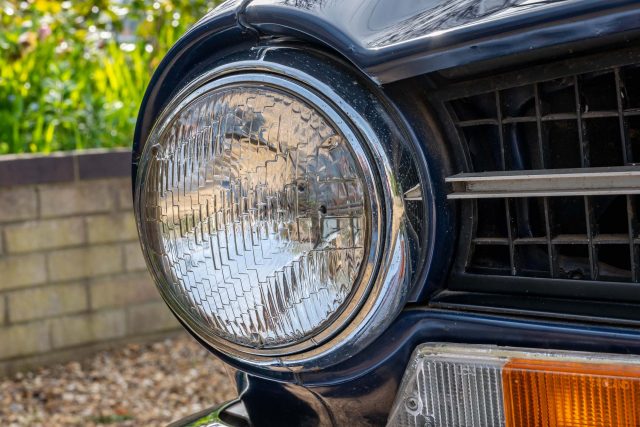
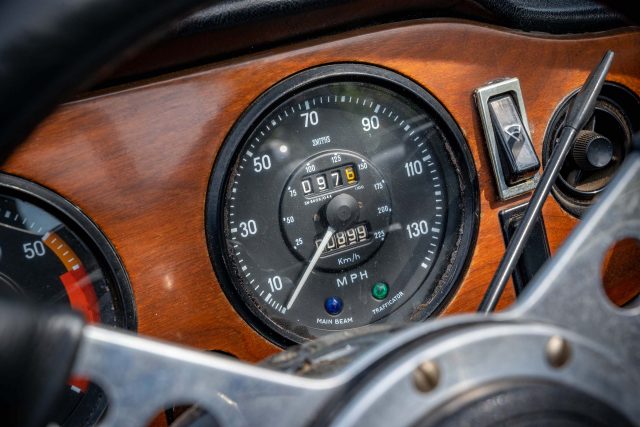
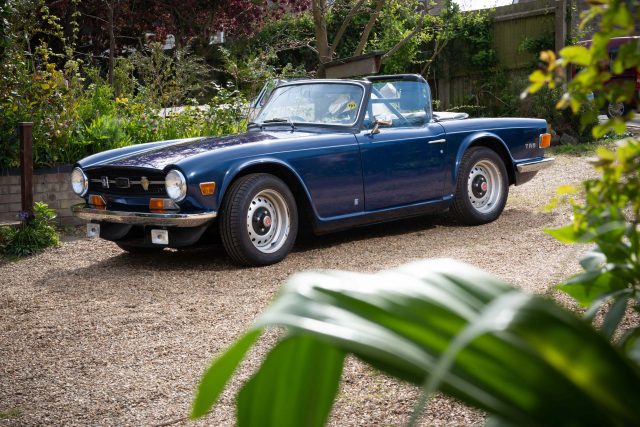
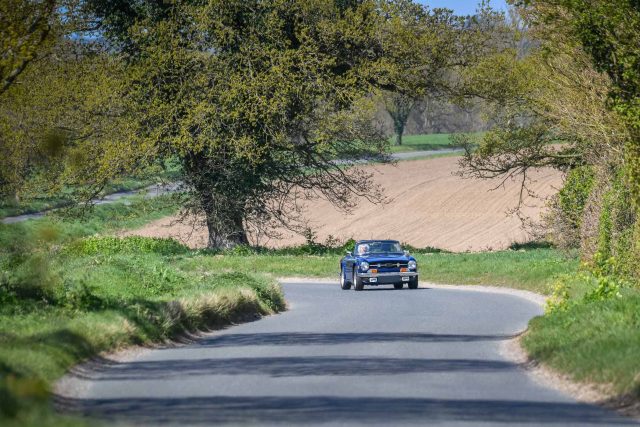
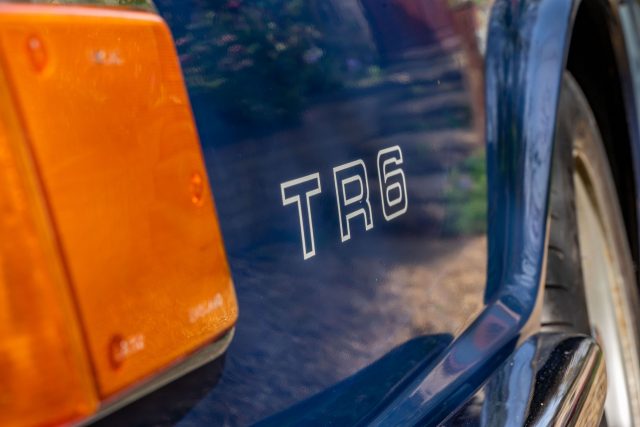
First TR6
Reg finally got something a little more interesting than the saloons he had been driving in 1978, a white Triumph TR6 fixed head coupe, but that only lasted about nine months before it, too, was used as collateral for another house move.
After landing a management job – which came with a company car – at Jarrold Printing in Norwich, it was only natural to use the TR6 to help fund a move closer to the city, with his partner Marilyn.
“I sold the TR6 with the thought that as soon as I was financially stable again I would buy another one,” he says.
An opportunity presented itself on a lunch break in late 1980, when a Sapphire blue convertible cruised past Reg on Gentleman’s Walk – before that road joined the famed pedestrianisation of Norwich city centre.
“I saw it park outside Burtons, and the guy got out and dashed into Jarrold department store,” he remembers. “I chased after him, and caught up with him and said ‘excuse me mate, if you ever want to sell the TR6, give me a ring’, and I gave him my phone number.
“He said ‘actually, I might have to sell it after Christmas’. He was in the RAF and he had to get backwards and forwards to Catterick in North Yorkshire and he was using this TR6. It was costing him a fortune.
“Anyway, sure enough, shortly after Christmas I got a telephone call ‘I’m going to have to sell the TR, are you interested?’ I went and had a test drive and bought it in late January 1981 for about £2,000.”
READ MORE ABOUT SOME OF OUR GREATEST CLASSIC CARS WITH

A series of articles on our Cult Classics site.
Delayed gratification
But it would be some time before Reg used the car on the road…
“When I got it home, I stored it in a big shed in my next door neighbour’s garden,” he says, “and immediately set about planning and building an extension to my garage.”
Although the Triumph was in reasonably good condition, the course for the next few years was set when Reg spotted some rust on Saturday afternoon.
“I had my fingers gripped over the inner sill and it seemed a little bit rusty under there, so I got a mirror and had a look and there was a little bit of surface rust, no more,” he says.
“I thought ‘if this car is going to last me as long as I want it to, it’s got to be restored’. It started because of a small thing like that.
“I didn’t really know one end of a motor car from the other, apart from where the oil went, where the petrol went in, and sometimes you have to change a wheel and clean a few plugs.”
With the garage extensions in place, Reg built a further extension to its rear to serve as a workshop, and began taking the car apart.
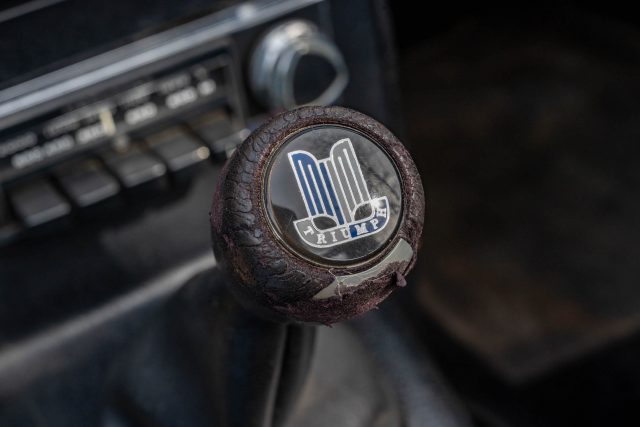
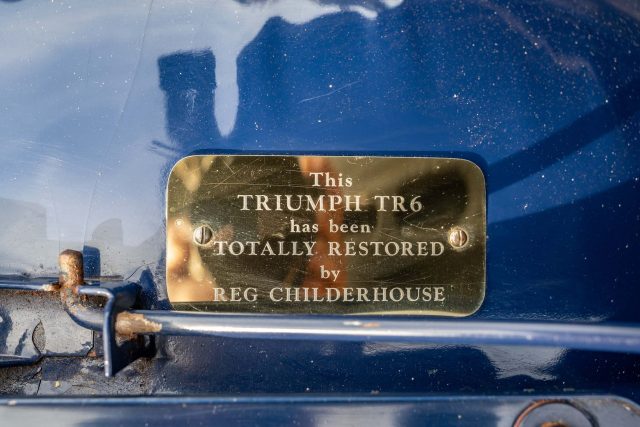
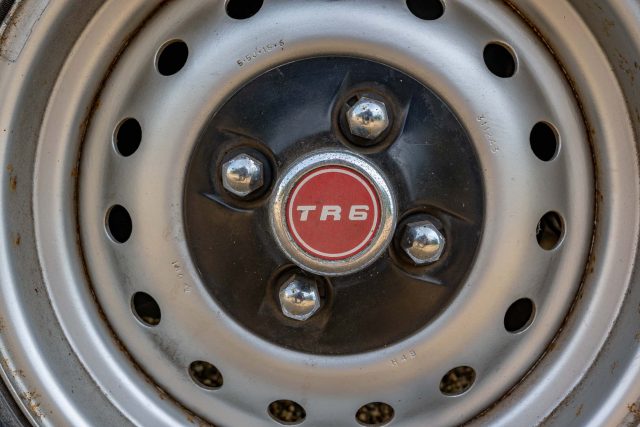
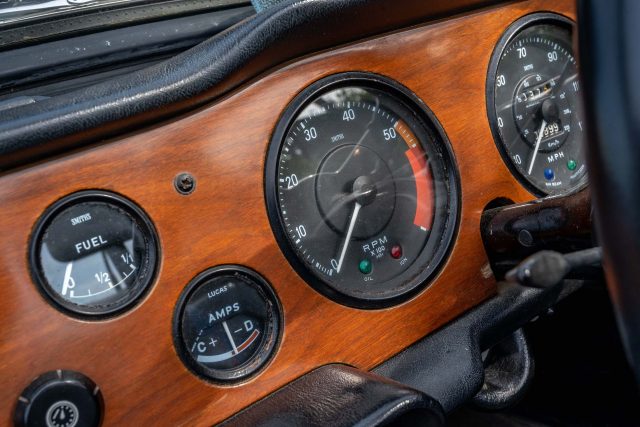
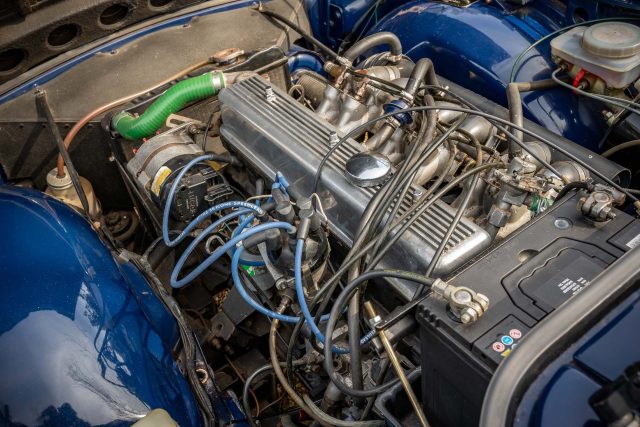
“I can use a spanner”
“I certainly wouldn’t call myself a mechanic, and I still wouldn’t, but I can use a spanner, and that car is made to be taken apart,” he says. “In the end, the only things I ended up replacing were the outer and inner sills on both sides, and I had to make up some new B-post backs, which had disintegrated.
“I had to cut out a small rotten section where the inner wing joined the H deck, and I taught myself to weld and put a new section in.”
The engine required very little attention – with the head removed, all looked clean and undamaged, so Reg thought it was best left alone.
As the work progressed, it became increasingly important to Reg as a release from the pressures of his working day, as the printing industry was in the throes of moving away from ‘hot metal’ to digital type-setting.
“So in my spare time, I would get stuck into working on the car. It was something I could get absorbed in, and I enjoyed it, I really did, it did the trick.”
With the car stripped down, repaired and ready to be painted, Reg constructed a polythene-clad spray booth in his back garden – after throwing away his final cigarettes, of course.
“I used to spray it first thing in the morning before I went to work, because there were fewer gnats and flies around at that time, and come home to look at the damage at night,” he laughs. “Cellulose paint dries fairly quickly, so any flies that did settle could be quite easily brushed off without damaging the paint.”
Although the restoration was pretty much complete in 1990, it was another few years before Reg got the TR6 on the road.
“To be quite honest with you, when I’ve done the work I tend to lose interest,” he says. “It’s bloody stupid – I loved the restoration, and putting stuff back together as it should be and getting it working properly.
“Also, my attention had been diverted to working on a vintage Riley sports car.”
Fish and chip runs
However, once he did start driving the Triumph, he enjoyed that too, especially runs out to Southwold on the Suffolk coast.
“I’ve used it for pottering about, a fun car to take out in the sunshine,” he says. “It’s never done massive mileage, and the furthest I’ve been is a drive to Southwold to get some of Mrs T’s fish and chips.
“That was lovely, I used to enjoy that, a steady drive down there and back.”
Reg even bumped into a former owner on a trip to the Norfolk Broads village of Wroxham.
“I went to the DIY store there one morning, rolled into the car park and blipped the throttle a bit,” he says. “This guy had heard the car revving, shot down the stairs from his office and was waiting for me when I came out. He said ‘I thought I recognised that engine note’.
“He told me his family had owned the car back in the early 70s, and he was amazed he’d seen it. Ever since then, he occasionally sticks his head in the door and says hello. I think he’d like to buy it, but whether he’d ever offer me I really don’t know…”
Not that Reg has any plans to sell it after all these years.
“It’s like one of the family, and I won’t sell it until I have to,” he says. “It’s a nice artefact, which I enjoy looking at if I’m not driving it.”
